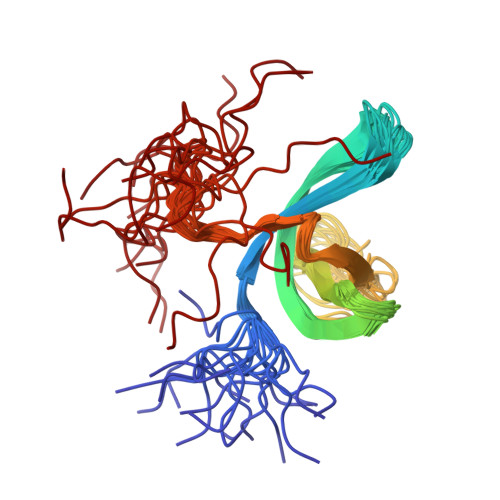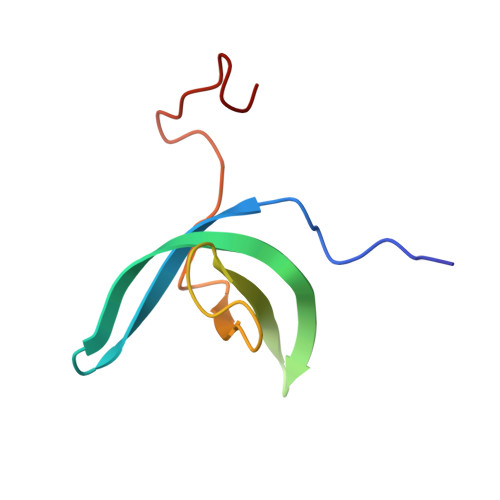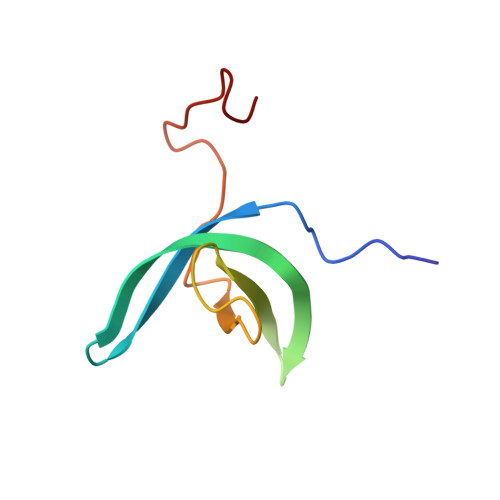Structural insight into recognition of methylated histone tails by retinoblastoma-binding protein 1.
Gong, W., Zhou, T., Mo, J., Perrett, S., Wang, J., Feng, Y.(2012) J Biological Chem
- PubMed: 22247551
- DOI: https://doi.org/10.1074/jbc.M111.299149
- Primary Citation of Related Structures:
2LCC - PubMed Abstract:
Retinoblastoma-binding protein 1 (RBBP1), also named AT-rich interaction domain containing 4A (ARID4A), is a tumor and leukemia suppressor involved in epigenetic regulation in leukemia and Prader-Willi/Angelman syndromes. Although the involvement in epigenetic regulation is proposed to involve its chromobarrel and/or Tudor domains because of their potential binding to methylated histone tails, the structures of these domains and their interactions with methylated histone tails are still uncharacterized. In this work, we first found that RBBP1 contains five domains by bioinformatics analysis. Three of the five domains, i.e. chromobarrel, Tudor, and PWWP domains, are Royal Family domains, which potentially bind to methylated histone tails. We further purified these domains and characterized their interaction with methylated histone tails by NMR titration experiments. Among the three Royal Family domains, only the chromobarrel domain could recognize trimethylated H4K20 (with an affinity of ∼3 mm), as well as recognizing trimethylated H3K9, H3K27, and H3K36 (with lower affinities). The affinity could be further enhanced up to 15-fold by the presence of DNA. The structure of the chromobarrel domain of RBBP1 determined by NMR spectroscopy has an aromatic cage. Mutagenesis analysis identified four aromatic residues of the cage as the key residues for methylated lysine recognition. Our studies indicate that the chromobarrel domain of RBBP1 is responsible for recognizing methylated histone tails in chromatin remodeling and epigenetic regulation, which presents a significant advance in our understanding of the mechanism and relationship between RBBP1-related gene suppression and epigenetic regulation.
Organizational Affiliation:
National Laboratory of Biomacromolecules, Institute of Biophysics, Chinese Academy of Sciences, Beijing 100101, China.
















